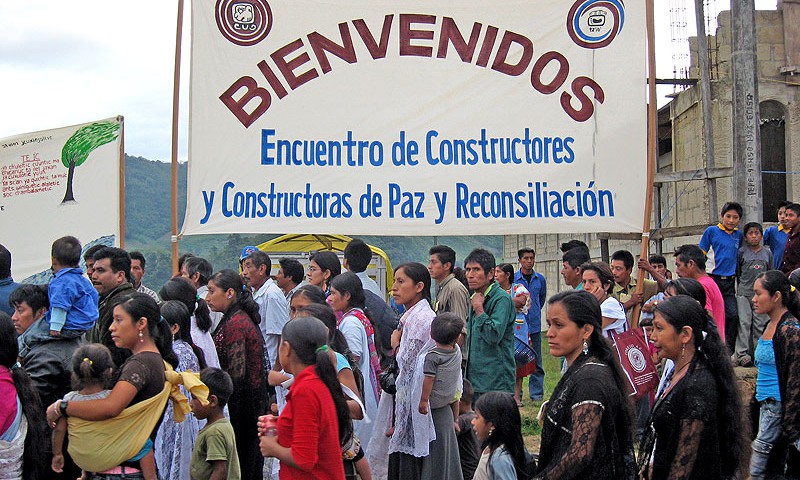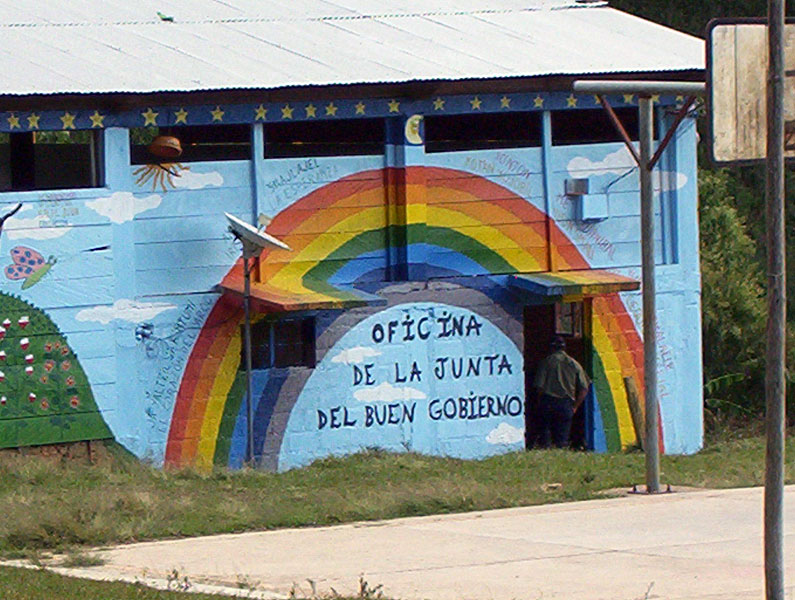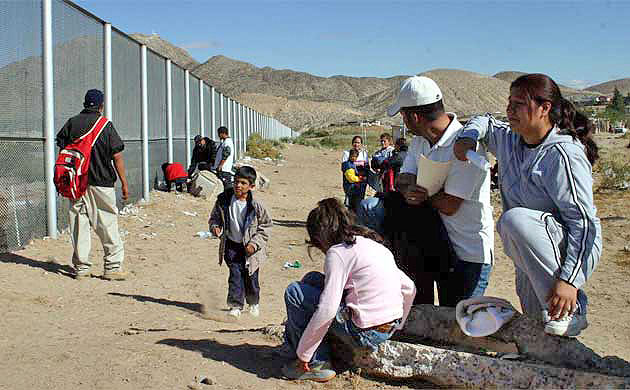2009
29/01/2010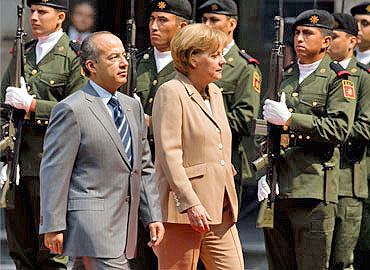
ANALYSIS: Serious challenges to Mexico regarding human rights
31/03/2010In November 2009, the “Fifth Meeting of Builders of Peace and Reconciliation” brought together nearly 600 people in the Lacandon jungle of Chiapas, and thanks to the constructive nature of the meeting, it was decided to hold a sixth Meeting—between the 9th and 12th of November 2010, in the Estrella Region of Ocosingo.
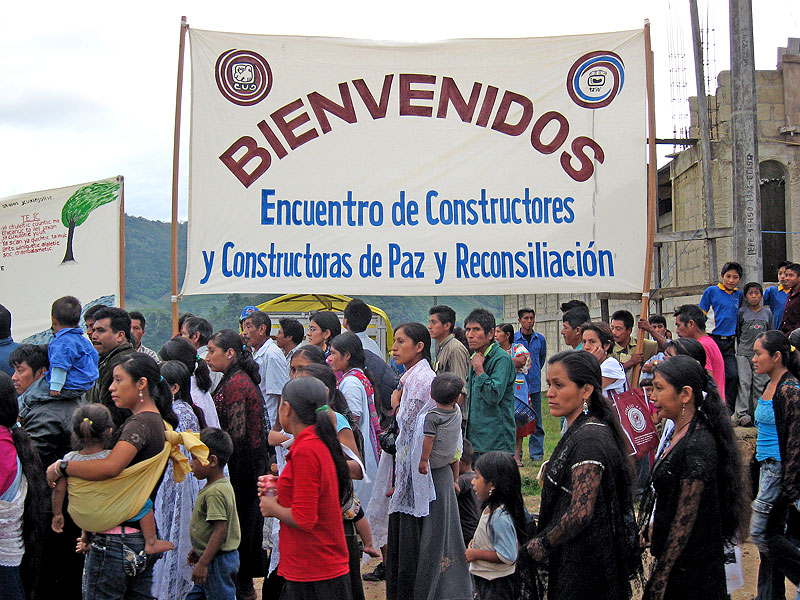 “Peace is not only for one group, but for everyone. It is for all peoples.” Thus began the presentation of the participants of the “Fifth Meeting of Builders of Peace and Reconciliation” that took place in the community of Taniperla, Chiapas, between the 10th and 13th of November 2009. Arriving from 17 municipalities, nearly 600 individuals, some representing civil organizations that differed from or even actively clashed with each other, they took possession of the space that has for five years been provided by the Commission of Support for Unity and Community Reconciliation (CORECO). Beyond an increased number of participants (from 27 persons in 2005 to 572 in 2009), the increasing presence of women, who represented a third of the participants who arrived in 2009, should also be noted.
“Peace is not only for one group, but for everyone. It is for all peoples.” Thus began the presentation of the participants of the “Fifth Meeting of Builders of Peace and Reconciliation” that took place in the community of Taniperla, Chiapas, between the 10th and 13th of November 2009. Arriving from 17 municipalities, nearly 600 individuals, some representing civil organizations that differed from or even actively clashed with each other, they took possession of the space that has for five years been provided by the Commission of Support for Unity and Community Reconciliation (CORECO). Beyond an increased number of participants (from 27 persons in 2005 to 572 in 2009), the increasing presence of women, who represented a third of the participants who arrived in 2009, should also be noted.
The meeting constituted three intense days of “reflecting on and analyzing the conflicts that we live in communities as well as of seeking alternatives, constructing one heart and one path for the community to find our own strength.” The three days were however also ones of coexistence in a spirit of solidarity, with celebrations taking place around a spectacular Mayan altar.
After having shared the struggles of building peace in the past year throughout the regions of Chiapas, the participants were divided into 10 work-tables dealing with the effects of migration, alcoholism, and drug-addiction; the rights of women and work with men; conflicts between organizations and political parties; resistance to government programs; problems of land, territory, and autonomy, as well as of the cultivation of maize, cultural traditions, and inter-religious dialogue.
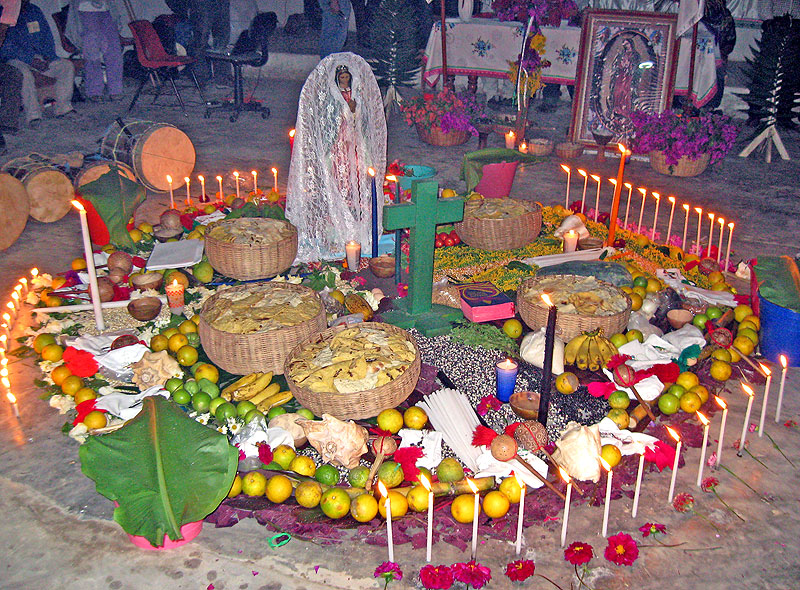 During the event, Felipe Toussaint, director of CORECO, proposed an analysis of present reality, illustrating how the capitalist system crushed the Mayan vision of the universe. In the center, where Mayan cosmology places the sky and the land—and men and women to take care of them—the capitalist system puts money, according to Toussaint. On top of the four care-takers of the world, known as bacabes among the Mayans, capitalism maintains four pillars that allow it to forcibly sustain itself and succeed in realizing its goals of wealth accumulation through: control of politics, economics, idealogy, and an emphasis on security. Toussaint further stressed the violence with which the capitalist system was imposed and is maintained. With regard to the present crisis, Toussaint suggested little by way of overcoming it but instead called on those present to work toward the building of another world non-violently and with respect for differences.
During the event, Felipe Toussaint, director of CORECO, proposed an analysis of present reality, illustrating how the capitalist system crushed the Mayan vision of the universe. In the center, where Mayan cosmology places the sky and the land—and men and women to take care of them—the capitalist system puts money, according to Toussaint. On top of the four care-takers of the world, known as bacabes among the Mayans, capitalism maintains four pillars that allow it to forcibly sustain itself and succeed in realizing its goals of wealth accumulation through: control of politics, economics, idealogy, and an emphasis on security. Toussaint further stressed the violence with which the capitalist system was imposed and is maintained. With regard to the present crisis, Toussaint suggested little by way of overcoming it but instead called on those present to work toward the building of another world non-violently and with respect for differences.
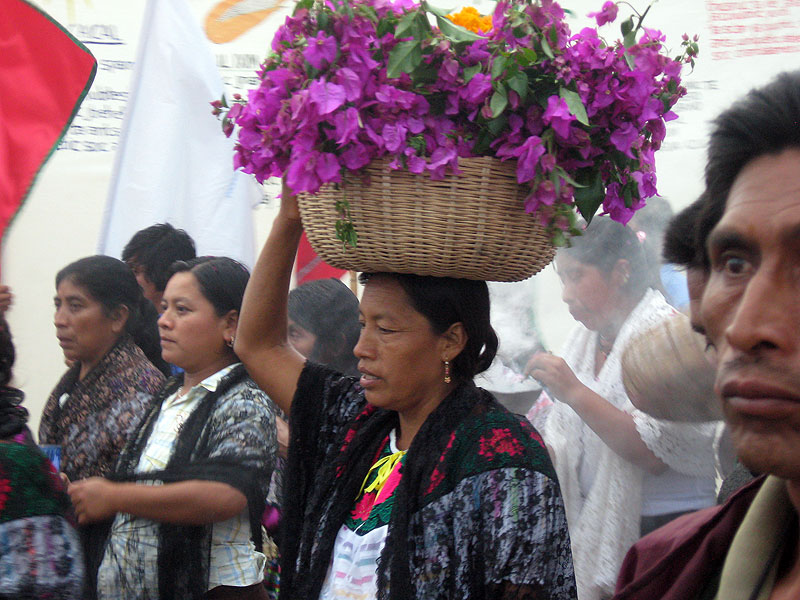 After this, the 600 participants joined together once again by region to come up with and commit themselves to peace initiatives for the following year. The initiatives that were proposed can be divided into three parts, the first being dialogue and reconciliation; as one group stressed, “if there is no communication, there can be no peace.” The participants proposed to promote dialogue in their communities “without regard to party, organization, or religion,” and to seek reconciliation among differences. As an illustration of this, the coordinators of the meeting gave a blanket representing the four elements as a gift and planted maize so as to affirm that “being, like maize, of different colors, we all have the same heart.”
After this, the 600 participants joined together once again by region to come up with and commit themselves to peace initiatives for the following year. The initiatives that were proposed can be divided into three parts, the first being dialogue and reconciliation; as one group stressed, “if there is no communication, there can be no peace.” The participants proposed to promote dialogue in their communities “without regard to party, organization, or religion,” and to seek reconciliation among differences. As an illustration of this, the coordinators of the meeting gave a blanket representing the four elements as a gift and planted maize so as to affirm that “being, like maize, of different colors, we all have the same heart.”
Later, the necessity for inclusion and participation of all to build a meaningful peace was reflected in several suggestions for action: “Encourage women and young people to attend these meetings;””Share the details of the meeting with those in our communities, as many could not come;” and “Open spaces for participation in all organizations, and promote dialogue with authorities of ejidos, localities, and regions.”
In the end many promised to promote more awareness and organization in their regions—for example, awareness of governmental projects (“present small workshops, tell the people how it is that we can control the government projects that affect our lands”) or of nature-preservation (“be careful not to use pesticides,” “care for the maize and Mother Earth”). With regard to organization, one proposal suggested that participants should “Motivate our communities to organize themselves more,” but there was also an expressed desire to “slowly leave behind programs of governmental support ” and deal with the problems of alcoholism and migration.
Beyond merely stressing the need for a just peace or dreaming of its realization, the meeting concerned itself with the very construction of such peace: everyone in her or his community working every day toward that dream that we all share. There was identified the need not only to criticize or complain but also to propose, construct, imagine—a struggle that deserves to be recognized. This meeting demonstrated in vivo that the rejection of violence does not imply passivity but rather the construction of a peace whereby one can intervene in present reality by means of thousands of non-violent actions.

